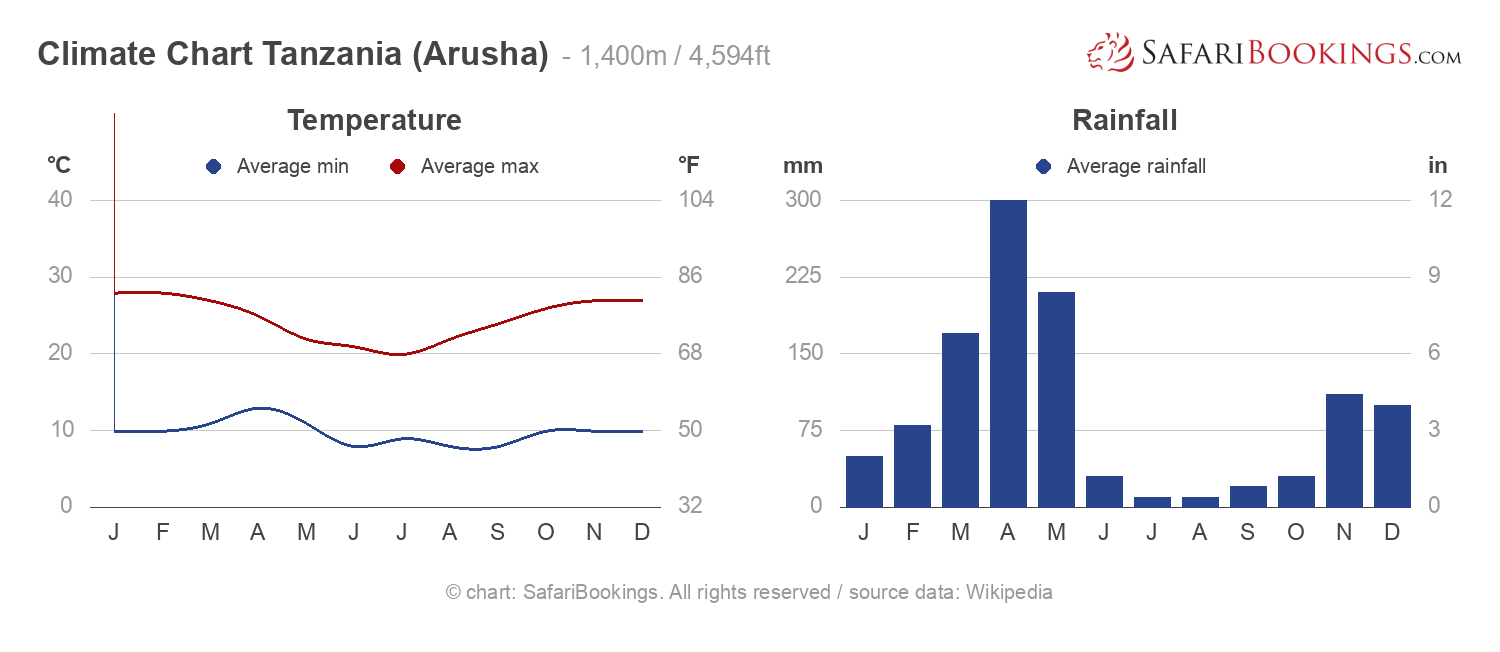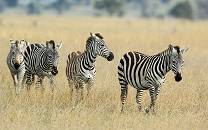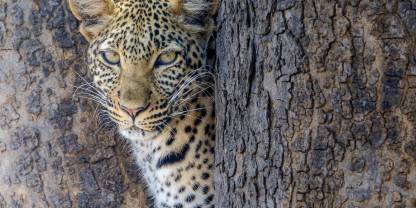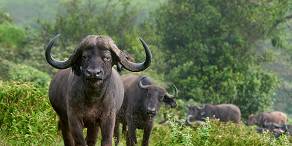
Climate Chart Arusha – 1,400m / 4,594ft
Tanzania has a pleasant, tropical climate, but it has large regional climatic variations influenced by several factors, including altitude. The hottest and most humid part of the country is the coast. Other low-lying areas, such as the western and southern parks, are also hot but less humid. The rest of the interior is much milder and often cold at night. Tanzania has a distinct Dry and Wet season.
Arusha's Climate Compared to Tanzania's Parks
Arusha is the town closest to the most popular northern parks and has a comparably mild climate. The peak amount of rainfall in April is considerably less in most parks than in Arusha. The Ngorongoro Crater rim receives quite a lot of rain and is very cold during evenings and mornings due to its high altitude (about 2,300m/7,545ft). Lower-lying parks, such as Lake Manyara, Nyerere (Selous), Mikumi, Ruaha, Gombe, Mahale Mountains and Katavi National Parks, are warmer than Arusha.
Arusha is the town closest to the most popular northern parks and has a comparably mild climate. The peak amount of rainfall in April is considerably less in most parks than in Arusha. The Ngorongoro Crater rim receives quite a lot of rain and is very cold during evenings and mornings due to its high altitude (about 2,300m/7,545ft). Lower-lying parks, such as Lake Manyara, Nyerere (Selous), Mikumi, Ruaha, Gombe, Mahale Mountains and Katavi National Parks, are warmer than Arusha.
Dry Season June to October
There is little rainfall in the Dry season and the humidity is very low. It cools off at night. Be sure to pack warm clothing because morning game drives in open vehicles will be cold, especially in the northern parks.
 View Photos
View Photos
- June, July, August & September – Afternoon temperatures are usually between 20°C/68°F and 30°C/86°F but vary greatly according to altitude and location. Most days have a fine, clear sky and sunny weather.
- October – It’s the end of the Dry season. It is hot and the first rains will come as a relief.
Dry Season Photos
Wet Season November to May
During most of the Wet season, afternoon temperatures are consistently hot (around 30°C/86°F) but it is colder above 1,300m/4,265ft. Mornings are cold in most northern parks due to the high altitude.
 View Photos
View Photos
- November & December – 'Short rains' – It rains regularly for about a month sometime between November and December. The timing of the short rains is unpredictable and, in northern Tanzania, it can be as early as October. The rains will rarely interfere with your safari.
- January & February – The northern parks and coastal areas tend to have a break in the rainy season. The other parks don't really experience a dry spell.
- March, April & May – 'Long rains' – These are the wettest months. It tends to rain heavily almost every day, although not often for the whole day. Humidity tends to be high, especially in the hotter southern and western parks.





